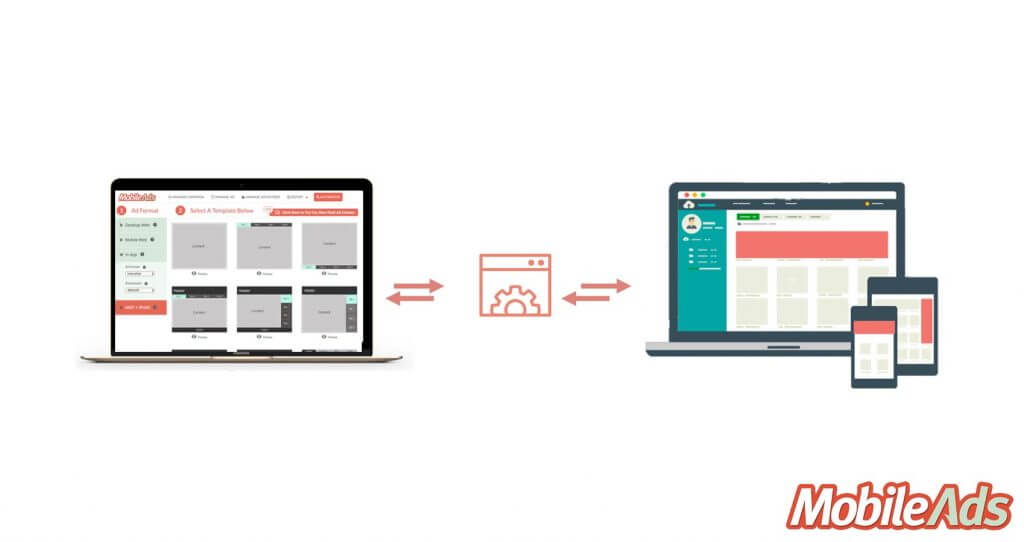What is an Ad Tag? A third-party ad tag or ‘ad placement tag’ is simply a snippet of Javascript code, generated from a 3rd party ad server, which is then placed into an ad inventory space on a website or app...
What is an Ad Tag?
A third-party ad tag or ‘ad placement tag’ is simply a snippet of Javascript code, generated from a 3rd party ad server, which is then placed into an ad inventory space on a website or app to display ad creatives that were uploaded on the ad server.
In layman terms, the ad tag is a digital container in which ad creatives will display.
The same single ad tag can be placed on multiple ad inventory space on different websites and apps. Demand-side platforms(DSP) and ad networks can also make use of ad tags in a programmatic environment for ad serving.

With it implemented, the advertiser no longer has to go to directly to each publisher to change the creative. Any creative change on the ad server will reflect on the single ad tag, placed in every publisher you run ads in.
Generally, an ad tag enables advertisers to:
Make creative changes and optimization from the ad server, instead of going directly to each publisher. Do creative A/B & multivariate testing. Track ad viewability – as trackers are placed within the ad tag. Track ad engagement.Parts of a third-party ad tag
An ad tag is composed of two different parts:
1) A URL from which the web browser accesses the content.
2) JavaScript code and HTML.
The role of HTML <iframe> tag is to inform the browser to open a mini window of a particular size inside the current window.
This will help to ensure that the ad won’t expand beyond the specified size. The path of an ad tag involves several steps.
When a user opens a particular webpage of the publisher, an ad tag code is called, and the signal is transmitted to the ad server to find the suitable creative. Depending on the creative dimension, a bid request is sent to the data provider to gather user-specific details such as age, gender, location etc. The ad server then forwards the request to the advertiser. The mode of buying is decided based on the relationship between the advertiser and publisher. The ad server returns the ad tag with the creative URL, placing the ad on the user’s browser.Pros and Cons of Third Party Ad Tags
Pros
Following are the advantages offered:
These tags allow a choice/presence of multiple advertisers for the publisher. This is because the ads are derived from the Ad Exchange which is a third party platform with multiple advertisers. The publishers, therefore, can display diverse ads on the website or mobile app to create higher conversions. Ads are managed by Ad Networks that provide 3rd party tags. The Ad Networks optimize the campaigns for specific sites which means that each publisher receives a targeted ad to show on their sites. Third party ad tags are used to send ads to segmented users and also to retarget the existing users where the possibility of higher conversions is maximum.Cons
Following are some disadvantages that come with 3rd party ad tags.
There is no control on data and no data transfer because the tags use techniques like cookie insertion, etc. The publishers are therefore required to keep checking the data to ensure that it is correctly targeted to the ads. Transparency is limited in third party ad tags. Ad can be initiated by unidentified advertisers and publishers may be at a loss to validate the data that they receive from a 3rd party. Because third party tags can come with unwanted advertisers, there is a concern of showing unwanted ads to the users. These include ads that show objectionable scenes on violence, porn, etc.Benefits of Ad Tagging
Lets us take a closer look at some of the benefits of ad tagging
1. Measure ad impressions
Marketers can measure the performance of an ad impression based on clicks and impressions. When an ad is deployed, impressions can help track the first interaction of a customer while clicks help measure the number of times an ad was clicked on.
The CTR can be measured by dividing the number of ad impressions with the number of clicks.
2. Obtaining customer information and metrics
All the essential information about the ad placement and the user are included inside the ad tag. When a web browser directs an ad tag to an ad server, the ad tag will be passed on to multiple advertisers requesting ads or bids.
Ads which are most profitable for the publisher will be chosen.
But, this is mainly depending on the relationship between the publisher and the advertiser.
The ad server can also pass the ad tag on to a third party data provider to retrieve information related to user segmenting or contextual targeting.
The creatives are then delivered from the ad server through the ad tag with the creative URL.
Ad tags are helpful in keeping track of the browsing pattern of the user based on information such as purchase details, transaction ID, user details, transaction revenue, etc.
Marketers can make use of the data obtained to check if any optimization is needed in the particular ad campaign.
3. Optimize the loading time
Studies have shown that overcrowding the web page with too many ads can seriously impact the loading time.
Let’s say, there are 20 ads on a web page. The browser has to connect with different ad servers for these ads to load.
Too many ads on the web page will increase bounce rates, poor page visibility, and higher page loading time. Thus it is imperative to balance the number and type of ad tags you add to your web page.
Using tags like asynchronous tags will help the browser to load the page’s contents and ads smoothly. For instance, working with a skilled mobile app developer can assist in implementing these techniques effectively.
4. Helps in ad positioning
Often ads get loaded in improper dimensions, blocking the webpage and affecting the user experience.
Using tags such as <iframe> ad tag helps appropriately position the ad without affecting the page’s layout.
When the <iframe> ad requests the ad server an HTML document where the ad content is embedded is returned to the browser, and the ad will be placed in the appropriate ad space.
This article is a part of our comprehensive guide on “What Is An Ad Server And Why You Should Use It?”
Learn more about mobile ad serving and ad tags with MobileAds.
Related Sources to Read:
–When to Consider Mobile App Development for Your Business
–Why Mobile Apps Are Important for Your Business
–Factors to Consider When Hiring a Mobile App Development Company
–Mobile App Development Cost Estimate in Malaysia
Looking for a top-notch Mobile App Developer Malaysia? Your search ends here! Contact us now to bring your app idea to life with expert developers.











